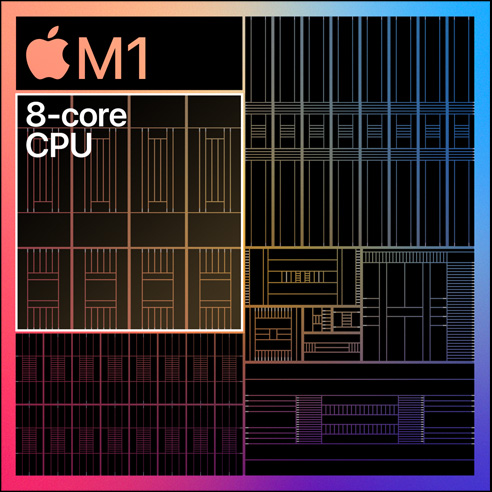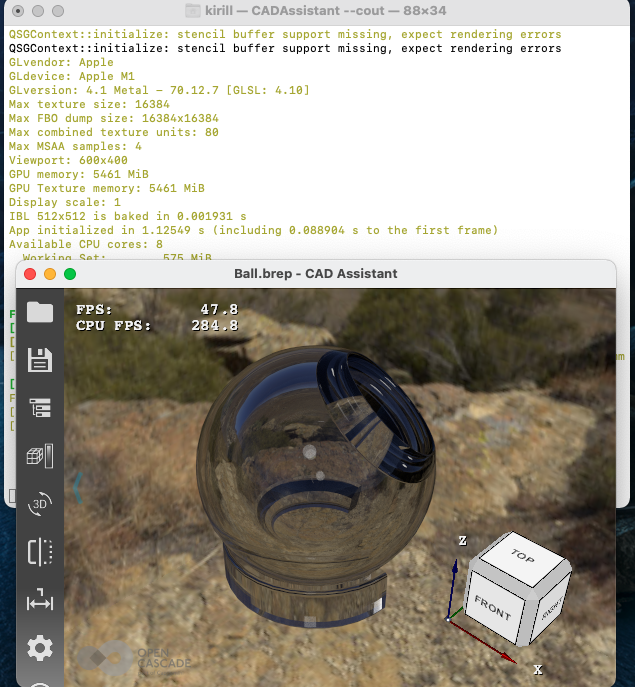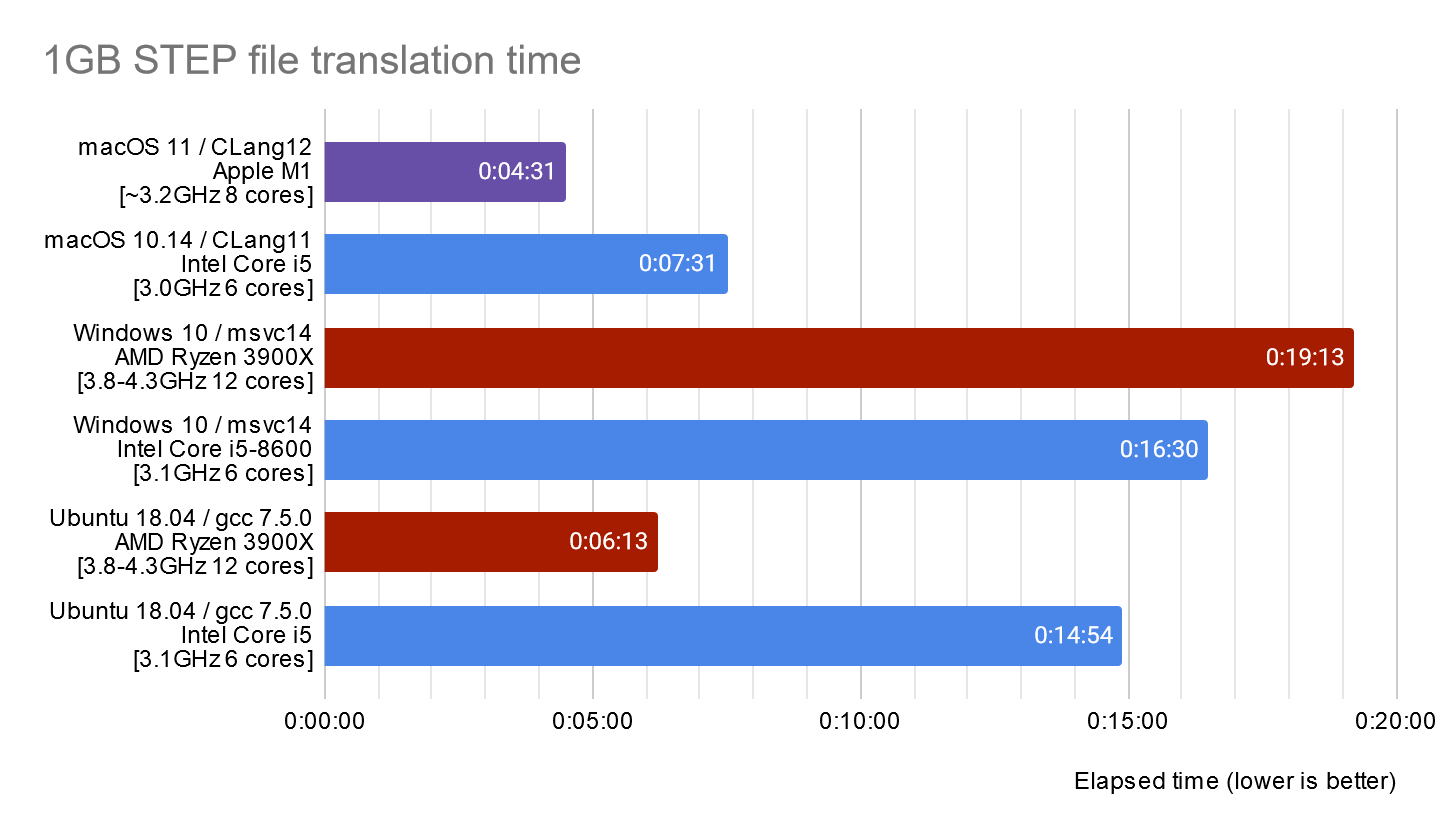
Sun, 12/20/2020 - 01:35
Apple has just released its first generation of ARM-based desktop computers. Macs used exclusively Intel CPUs since transition from IBM PowerPC in 2006, but now Apple believes that their own SoC, originally developed for mobile devices (iPhone and iPad), can replace Intel CPUs within the whole line of products in just 2 years!

Apple M1 SoC became the heart of several low-end devices within the вЂ2020 line of products, but Apple promises an outstanding performance difference compared to previous Intel-based generation of products. This is difficult to believe! Could this be true?
CPUs on ARM architecture developed by various vendors usually do not make records in operational frequencies, so there is some skepticism whether ARM hardware may compete with x86 in performance. Thanks to low power consumption design, ARM64 CPU architecture dominates in smartphones and tablets, but desktop and server markets remain shared by Intel and AMD CPUs on x86_64 architecture (an AMD’s 64-bit extension to x86 CPU architecture originally developed by Intel) delivering an outstanding performance in general-purpose computations.
Performance comparison is an interesting point, but as a developer of an open-source CAD kernel, I’m also curious if our software has any issues specific to ARM hardware. This question arises due to two aspects - CAD algorithms in Open CASCADE Technology (OCCT) may suffer from floating point instabilities (implementations differ on various CPUs) and lack/inaccessibility of ARM-based hardware for comprehensive testing.
OCCT is already used on ARM-based Android devices for long enough, but testing on such a platform is complicated due to limitations of Android itself and slowness of mobile hardware. New Mac mini with an ARM64 CPU gives a new opportunity of testing OCCT on a more traditional desktop OS and fast enough hardware - and this is the actual subject of this article!
Test configuration
The following configurations have been used for the tests (prices are taken from online markets at the moment of publication, see also comments):
| OS | CPU | GPU | RAM | SSD | Price | |
| Mac mini вЂ2020 | macOS 11.0 |
Apple M1 (3.2 GHz, 8 cores, 5 nm) |
Apple M1 [OpenGL 4.1] |
8 GB LPDDR4 |
500 GB | ~$900 (but locally available ~$1200) |
| Mac mini вЂ2018 | macOS 10.14 | Intel Core i5 (3.0 GHz, 6 cores, 14 nm) |
Intel UHD Graphics 630 [OpenGL 4.1] |
8 GB DDR4-2677 |
250 GB | ~$1100 (for 500 GB version) |
| Intel-based PC | Windows 10 |
Intel Core i5-8600 (3.1 GHz, 6 cores, 14 nm) |
Radeon R9 380 [OpenGL 4.6] |
32 GB DDR4-2400 |
500 GB (Patriot Burst) |
~$1400 (~$900 without discrete GPU) |
| AMD-based PC | Windows 10 |
Ryzen 3900X (3.8-4.3 GHz, 12 cores / 24 threads, 7 nm) |
Radeon Vega [OpenGL 4.6] | 128 GB DDR4-2900 |
1 TB (Samsung 970 Pro) |
~$2100 (~$1650 with 16GB RAM) |
Apple M1 in Mac mini вЂ2020 is an 8-core CPU with 4 fast and 4 slower cores - it is the main guest of this show. Mac mini вЂ2018 with 6-cores Intel Core i5 is used for direct comparison between products sold by Apple at close price.
Intel-based PC is a competitor based on an independent from Apple platform - it uses Intel Core i5 close to Mac mini вЂ2018 and represents a several-years-old typical developer's workstation with a good performance/price ratio of the time (before newer generations of AMD Ryzen CPUs arrived).
AMD-based PC is obviously far from the other computers in the table by the price range, it has been put to show some numbers with more expensive configuration.
GPU Path-Tracing
GPU Path-Tracing algorithm is implemented in OCCT via relatively complex GLSL program requiring OpenGL 4+ graphics. CAD Assistant application exposes Ray-Tracing options to a user and allows executing simple performance tests.

Test scene with a glass ball shows that the new GPU in Apple M1 is faster than Intel GPU in previous-generation Mac mini, but far behind any middle-range GPU.

Building OCCT
Configuring OCCT to target native ARM64 architecture on macOS is not a problem thanks to CMake - just need to specify arm64 or x86_64 to CMAKE_OSX_ARCHITECTURES parameter and this is it:
anAbi=arm64
#anAbi=x86_64
export MACOSX_DEPLOYMENT_TARGET=10.10
# paths to pre-built 3rd-parties
aRapidJson=$HOME/develop/rapidjson-1.1.0
aFreeType=$HOME/develop/freetype-2.10.4-macos-$anAbi
aFreeImage=$HOME/develop/freeimage-3.18-macos-$anAbi
aPlatformAndCompiler=mac-${anAbi}-clang
aWorkDir=work/${aPlatformAndCompiler}-make
aDestDir=$aCasSrc/work/$aPlatformAndCompiler
pushd $aWorkDir
cmake -G "Unix Makefiles" \
-D CMAKE_BUILD_TYPE:STRING="Release" \
-D BUILD_LIBRARY_TYPE:STRING="Shared" \
-D CMAKE_OSX_ARCHITECTURES:STRING="$anAbi" \
-D INSTALL_DIR:PATH="$aDestDir" \
-D INSTALL_DIR_INCLUDE:STRING="inc" \
-D INSTALL_DIR_LIB:STRING="lib" \
-D INSTALL_DIR_RESOURCE:STRING="src" \
-D INSTALL_NAME_DIR:STRING="@executable_path/../Frameworks" \
-D 3RDPARTY_FREETYPE_DIR:PATH="$aFreeType" \
-D 3RDPARTY_FREETYPE_INCLUDE_DIR_freetype2:FILEPATH="$aFreeType/include" \
-D 3RDPARTY_FREETYPE_INCLUDE_DIR_ft2build:FILEPATH="$aFreeType/include" \
-D 3RDPARTY_FREETYPE_LIBRARY_DIR:PATH="$aFreeType/lib" \
-D 3RDPARTY_FREETYPE_LIBRARY:FILEPATH="$aFreeType/lib/libfreetype.dylib" \
-D USE_RAPIDJSON:BOOL="ON" \
-D 3RDPARTY_RAPIDJSON_DIR:PATH="$aRapidJson" \
-D 3RDPARTY_RAPIDJSON_INCLUDE_DIR:PATH="$aRapidJson/include" \
-D USE_FREEIMAGE:BOOL="ON" \
-D 3RDPARTY_FREEIMAGE_DIR:PATH="$aFreeImage" \
-D 3RDPARTY_FREEIMAGE_INCLUDE_DIR:FILEPATH="$aFreeImage/include" \
-D 3RDPARTY_FREEIMAGE_LIBRARY_DIR:PATH="$aFreeImage/lib" \
-D 3RDPARTY_FREEIMAGE_LIBRARY:FILEPATH="$aFreeImage/lib/libfreeimage.a" \
-D BUILD_MODULE_Draw:BOOL="ON" \
"$aCasSrc"
Of course, you will also need to build all other 3rd-party libraries for a target architecture, which would require burning into various building environments. One curious thing to note - macOS 11.0 is the first official OS release with ARM64 support, but it is allowed setting MACOSX_DEPLOYMENT_TARGET to target older macOS releases, even macOS 10.10. This makes porting an application to new CPU architecture much more pleasing to a developer, as there is no need to bother about numerous deprecated APIs and other annoying changes in macOS SDK.
Tip: the CPU architecture of an executable and dynamic library can be checked by command “file”; command “lipo” will show an architecture of a static library. Multi-Architecture Binaries (also known as fat binaries) for macOS and iOS might pack several architectures at once:
> file libfreetype.dylib libfreetype.dylib: Mach-O universal binary with 2 architectures libfreetype.dylib (for architecture x86_64): Mach-O 64-bit dynamically linked shared library x86_64 libfreetype.dylib (for architecture i386): Mach-O dynamically linked shared library i386 > lipo info libfreeimage.a Architectures in the fat file: ./libfreeimage.a are: x86_64 arm64
Compilation is a regular process of software development and reducing time spent by a developer for this task is always desirable. So let's take a look at numbers showing OCCT building time on various configurations.

Modern building environments efficiently utilize multiple CPU cores, and 8-cores Apple M1 shows pretty good time compared to the old Intel Core i5 CPU (1.5-1.7x times faster). It is painful to recall past times when OCCT building took more than 1 hour (almost 2 hours on an old MacBook with Intel Core2Duo CPU)!
Reading a large STEP file
A large 1GB STEP file has been chosen for testing performance of long single-threaded execution of OCCT algorithms (here multiple CPU cores will not help scaling performance). Parsing a text file is just a small part of the process, as STEP translator involves computationally intensive Shape Healing algorithms in OCCT.

The comparison shows about 1.6x better time on Apple M1 system compared to an older Mac mini with Intel Core i5. Surprisingly, this specific test case shows tremendous difference between various compilers (CLang, msvc and GCC). This makes numbers taken from other systems not very illustrative as even Intel-based PC having CPU close to Mac mini вЂ2018 demonstrates a large difference. Alas, I have no time to try other compilers or to find another use case where a compiler does not affect results in such magnitude.
OCCT Test Suite
OCCT Test Suite is based on Draw Harness - a Tcl-based framework wrapping OCCT algorithms. It consists of about 20 thousand of test cases of different complexity involving a major part of OCCT functionality. Serial execution of such a large number of tests would be painfully slow, so tests are normally executed in multiple parallel processes printing success / failure statuses into log files and producing various file artifacts like 3D Viewer screenshots.

OCCT testing shows Apple M1 is ~1.7x faster than older Intel Core i5 CPU for this task.
The difference between msvc14 (Visual Studio 2015) and CLang (XCode) compilers still can be seen on the chart, but now fluctuations in particular algorithms are averaged by numerous tests and this chart illustrates a more general picture than a specific case of loading a single large STEP file.
The low number of failed tests (just ~150 cases) on macOS platform was a good surprise to me, as I was afraid of much worse results:
- macOS M1 (ARM64): 153 FAILED
- macOS Intel (x86_64): 148 FAILED
- Windows PCs (x86_64): 15 FAILED
Most failures are small deviations from reference values caused by floating point computation error, plus issues with limitations and bugs of OpenGL implementation on macOS platform. So that it could be stated that CLang12 + Apple M1 (ARM64) + macOS configuration has generally passed OCCT testing with minor deviations.
Conclusion
Hardware and software configurations used in performance tests were quite bitty - different RAM, different GPUs, different SSDs and different compilers. This does not allow us to say if one CPU is clearly better than another. But let professional journalists make in-deep research and overwhelming performance testing in various software products to show clearer vision if Intel and AMD should become worried about Apple M1 and possible expansion of ARM on desktop PC market.
This small research shows that CAD kernel OCCT works quite well on the new Apple M1 SoC based on ARM64 architecture with performance quite comparable to or even better than typical Intel CPUs. Mac mini вЂ2020 is also colder and quieter than Mac mini вЂ2018 at peak load, but this aspect is less important for a desktop computer. At the same time, GPU remains very basic, so I believe that Apple will keep using AMD Radeon graphics in their powerful configurations of MacBooks and iMacs.
Looking forward to the next generations of Apple ARM-based SoCs!
